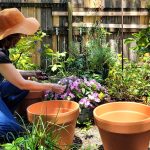Indoor plants are more than just pretty decorations for your home or business; they are also good for your body and mind in many ways. Bringing plants inside has become an important part of modern life, for many reasons, from making places look better to making the air better. In recent years, people have become increasingly interested in plant care as a form of mindfulness, wellness, and sustainable living. Whether placed in homes, offices, or public areas, indoor plants provide a refreshing natural touch that creates a soothing atmosphere. They can even help boost output and lower stress and change attitudes. The little act of bringing plants inside may help one lead a more balanced existence with no effort at all. Let’s look at the many benefits of including indoor plants into your everyday surroundings.
Air Purification and Humidity Regulation
Natural capacity of indoor plants to clean the air is among their most well-known advantages. Plants take poisons such formaldehyde, benzene, and trichloroethylene from the air and turn carbon dioxide into oxygen via a process called phytoremediation. Among the houseplants NASA’s Clean Air Study prominently recognized for their air-purifying qualities were English ivy, peace lilies, and spider plants. This makes indoor vegetation not only aesthetically beautiful but also helpful for respiratory health, particularly in metropolitan settings with little airflow.
By a process known as transpiration, indoor plants not only clean the air but also assist control humidity. Particularly in air-conditioned environments or during dry seasons, their release of moisture from their leaves helps to create a more pleasant interior temperature. Better humidity helps with dry skin, sore throats, sinus difficulties, and other conditions, thus improving the quality of your living surroundings.
Stress Reduction and Mental Health Support
Surrounded by plants, the human mind may become tranquil. Studies have shown that engaging with greenery—even something as basic as watering a potted plant—may reduce cortisol levels, the main stress hormone in the body. The presence of plants helps create a serene atmosphere that encourages relaxation, mindfulness, and emotional balance. This is particularly helpful in stressful workspaces or busy homes.
Furthermore, indoor gardening or caring for plants has been linked to reduced symptoms of anxiety and depression. The act of nurturing a living organism brings a sense of responsibility and purpose, which can be incredibly grounding. Some therapists even incorporate horticultural therapy as a tool to support mental wellness. Whether you’re a busy professional or someone seeking emotional balance, indoor plants offer a natural, low-effort way to boost mental health.
Enhanced Focus, Productivity, and Creativity
Indoor plants can significantly enhance cognitive performance. In workplaces and study areas, the presence of greenery has been found to improve concentration, memory retention, and creative problem-solving. This is due in part to the plants’ ability to reduce mental fatigue by offering subtle sensory stimulation. Just the visual presence of natural elements in a room can inspire clarity and mental sharpness.
For remote workers or students studying at home, strategically placing plants around desks or in study nooks can make a notable difference. A small potted succulent or a leafy fern on a windowsill can help create a more focused and inspiring environment. Employers have also recognized this benefit by integrating more greenery into offices and co-working spaces to foster higher performance and satisfaction among employees.
Interior Aesthetic and Design Versatility
Indoor plants elevate the aesthetics of any interior space, regardless of the design style. From minimalist studios to cozy family homes, plants add color, texture, and a sense of life to an environment. Their versatility in size, shape, and type allows them to serve both functional and decorative roles. A tall fiddle leaf fig tree can fill an empty corner, while a trailing pothos plant can bring movement to a static shelf.
In addition, indoor plants can act as natural design elements that soften architectural lines or add organic contrast to modern furnishings. They work well with other natural materials like wood and stone, creating a cohesive and harmonious look. Many people now treat plant arrangement as a form of interior styling, choosing pots, stands, and plant types that complement their overall home décor.
Accessibility and Low Maintenance Options
Contrary to popular belief, not all indoor plants require a green thumb. Many varieties are beginner-friendly and thrive with minimal care, making them accessible even to those with busy schedules or little gardening experience. Plants like snake plants, ZZ plants, pothos, and succulents are hardy and resilient, requiring only occasional watering and indirect sunlight to flourish.
This accessibility means that anyone can enjoy the benefits of indoor plants without feeling overwhelmed. With the availability of self-watering pots, moisture meters, and detailed care guides, keeping a plant alive has never been easier. Indoor gardening can start small—with a single plant—and expand gradually based on your comfort level. It’s a flexible hobby that grows with you, both literally and figuratively.
Conclusion
Indoor plants offer a wide spectrum of benefits, from improving air quality and humidity to boosting mental health, focus, and overall aesthetics. Whether you’re aiming for a healthier home environment or simply looking to brighten up a dull room, adding greenery is a simple and effective solution. With so many easy-care options available, there’s truly a plant for every personality and space. Embracing indoor plants is more than a trend—it’s a lifestyle that nurtures both your surroundings and your well-being.

